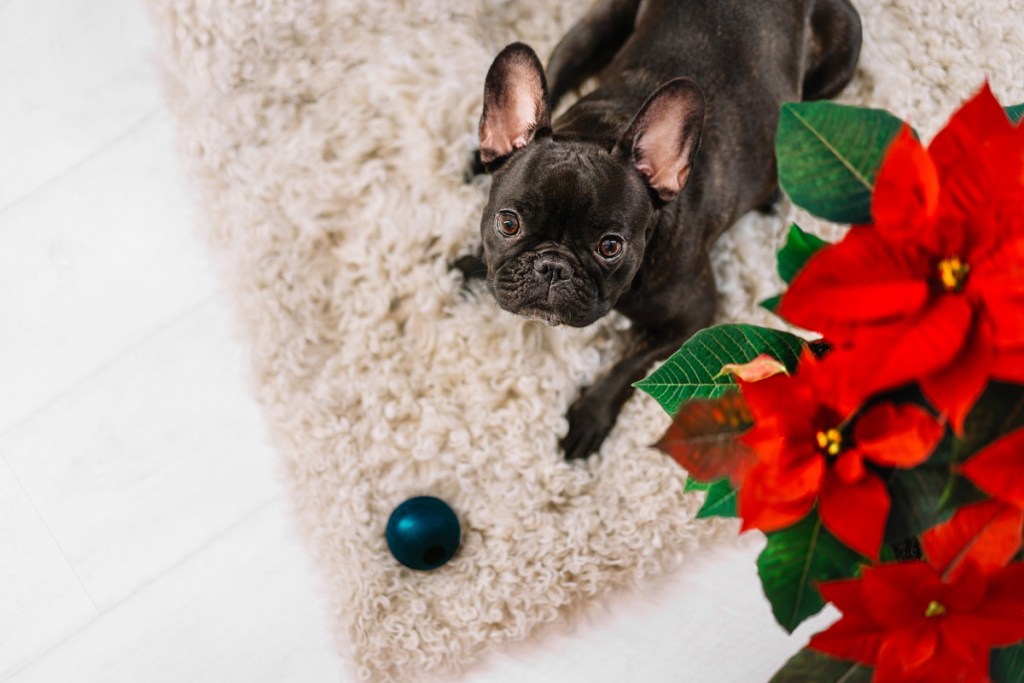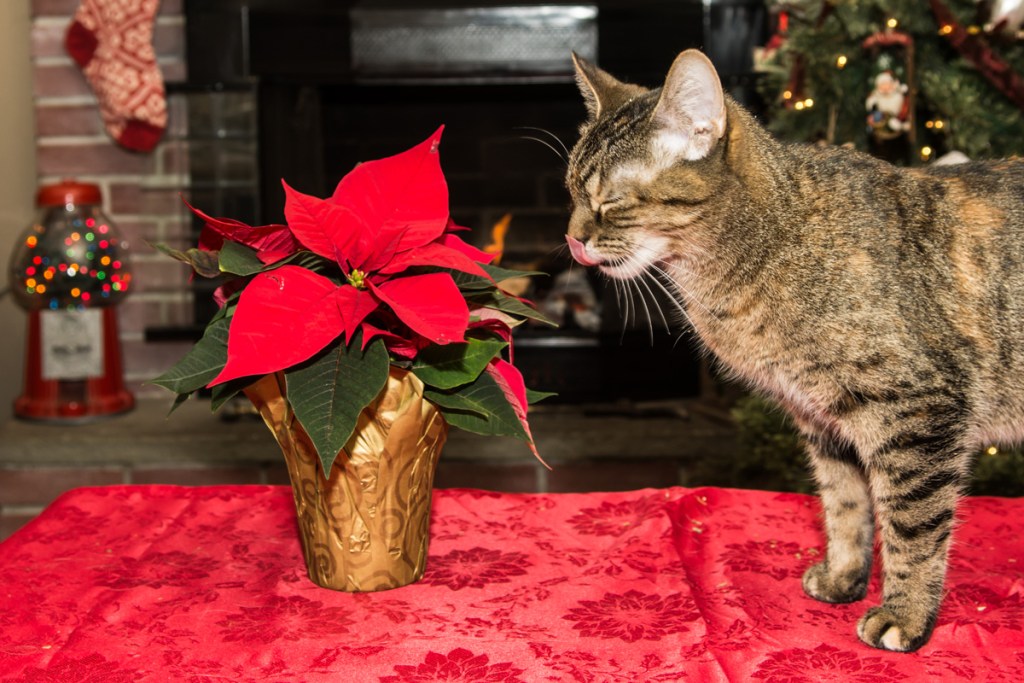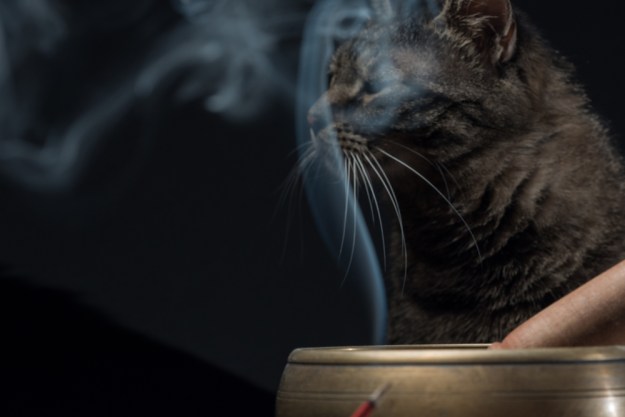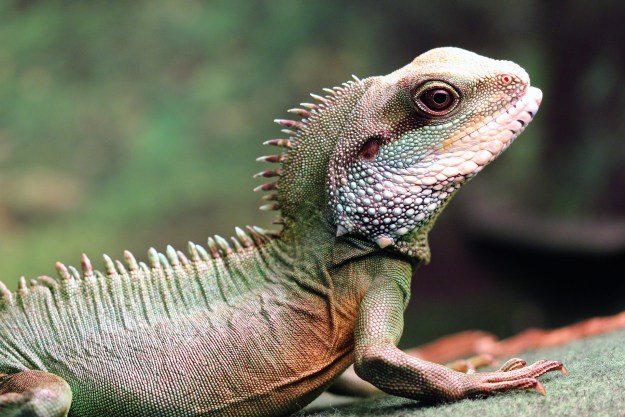For many families, Christmas decorating wouldn’t be complete without pots of poinsettias placed throughout the house. But are poinsettias toxic to pets? Whether flanking the fireplace, serving as table centerpieces, or gracing the foot of the holiday tree, these striking plants add welcome color to the festivities. However, as with any holiday decorations, positioning poinsettias in the home takes careful consideration by pet parents.
Why you need to keep your pet away from poinsettia
We’re sure you’ve heard that poinsettias can be lethal if ingested by pets. But is that true? Experts at the American Society for the Prevention of Cruelty to Animals (ASPCA) say, “Poinsettias may be the most misrepresented plant when it comes to toxicity.” In fact, according to the ASPCA, many animal studies have shown that the plant is not lethal to pets. The Pet Poison Helpline says, “While commonly ‘hyped’ as poisonous plants, poinsettias rarely are.”
That said, poinsettias are mildly toxic to pets and should be kept out of their reach. According to the Pet Poison Helpline, the milky white sap found in poinsettias contains chemicals similar to those in detergents that can cause gastrointestinal problems. The sap can also cause skin irritation. Signs to watch for if you suspect that your dog or cat has been munching on poinsettia leaves include:
- drooling
- lip licking
- vomiting
- diarrhea
- skin irritation including redness, swelling, and itchiness
- eye irritation

Veterinary experts at PetMD say it would take a large amount of the poinsettia material to cause serious health issues. Luckily, most pets are discouraged from eating large amounts because the sap has an unpleasant taste and an irritating effect on the tissues of the mouth. The size of your pet and the amount ingested will determine the severity of the symptoms. According to the Pet Poison Helpline, medical treatment is rarely necessary unless symptoms are severe. When in doubt, it’s always best to reach out to your veterinarian for advice.
How to safely decorate with poinsettias
Due to poinsettias’ low level of toxicity, American Kennel Club experts say it’s safe to include them, while exercising caution, as part of your holiday décor. Since most cats can easily jump onto high places, it’s challenging to keep them away from toxic plants. Do your best to keep such plants safely out of your pet’s reach and avoid leaving a cat or dog unattended around holiday plants and other decorations. Here are some tips when decorating with poinsettias:
- Kitchens are often overlooked when it comes to holiday decorations, but a large window sill over the kitchen sink is a great place to put a few poinsettia plants. They make a bigger splash when bunched together, and you can enjoy their cheery color while working in the kitchen knowing that your dog can’t get to them. This won’t work for cats, though, as they can easily jump onto the sink to get to the plants.
- Placing poinsettias on top of a mantelpiece can add vibrant color to a room while keeping the plants safely out of reach of dogs and many cats. Clearing furniture from either side of the fireplace can help deter agile cats from using a table, couch, or chair as a launching pad to reach the mantelpiece.
- You don’t have to worry about pets getting to the plant if it’s safely displayed inside a glass vase. Design experts at Better Home & Gardens suggest cutting poinsettia blooms and placing them in water inside hanging macramé vases. Just remember to change the water frequently in order to keep the cut poinsettias fresh.
- Consider using artificial poinsettias. There are some gorgeous lifelike silk displays that you can safely place around your home without having to worry about the hazards of live plants. Adding faux poinsettia leaves to Christmas wreaths or garlands can add a festive splash of color to your home.

Avoid toxic plants altogether
The poinsettia is not the only popular holiday plant you need to consider for its toxicity. You also need to keep pets away from holly, mistletoe, amaryllis, and Christmas lilies. The best way to protect your pets is to avoid including toxic plants in your holiday decor. This is especially true if you live with a pet who has a penchant for chewing on flowers or leaves. In that case, it’s best to opt for artificial plants so the whole family can enjoy a happy and healthy holiday season.
Editors' Recommendations
- Why does my dog have a bald patch on their tail? Here are the answers you need
- Looking for signs your dog has ticks? These telltale symptoms mean you have a flea or tick problem
- Is your puppy breathing fast while sleeping? Here’s when you should worry and how to help your dog
- Why do you often find your dog with their tongue out? Here’s what vets say about the ‘blep’
- Is your old dog shaking? 1 of these 6 problems may be the cause




